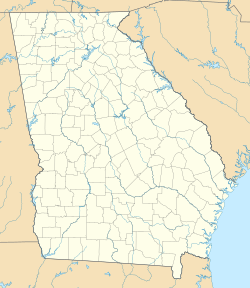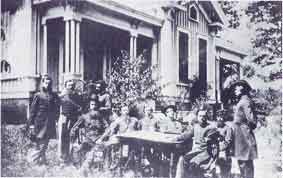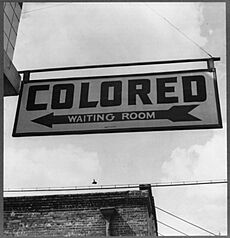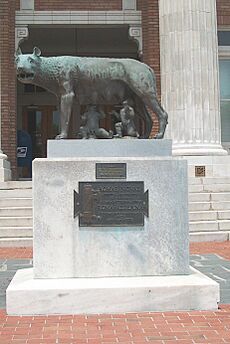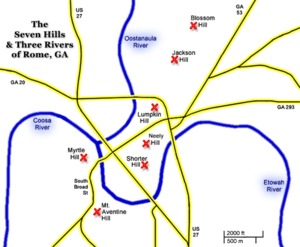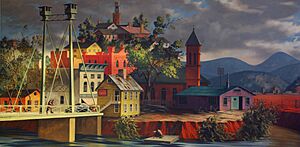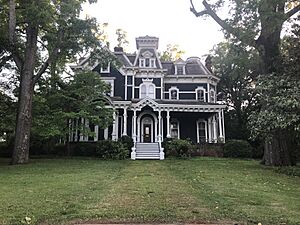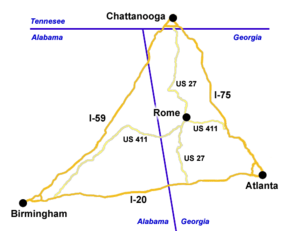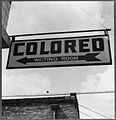Rome, Georgia facts for kids
Quick facts for kids
Rome, Georgia
|
|||
|---|---|---|---|
|
City
|
|||

View of Rome from Myrtle Hill Cemetery
|
|||
|
|||
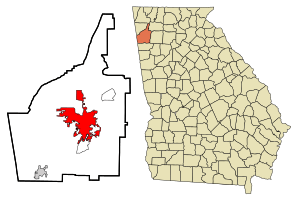
Location in Floyd County and the state of Georgia
|
|||
| Country | United States | ||
| State | Georgia | ||
| County | Floyd | ||
| Incorporated | December 20, 1834 | ||
| Named for | Rome, Italy | ||
| Government | |||
| • Type | Commission–manager | ||
| Area | |||
| • City | 32.45 sq mi (84.05 km2) | ||
| • Land | 31.68 sq mi (82.05 km2) | ||
| • Water | 0.77 sq mi (1.99 km2) | ||
| Elevation | 614 ft (187 m) | ||
| Population
(2020)
|
|||
| • City | 38,255 | ||
| • Density | 1,190.40/sq mi (459.61/km2) | ||
| • Metro | 101,789 | ||
| • Demonym | Roman | ||
| Time zone | UTC−5 (EST) | ||
| • Summer (DST) | UTC−4 (EDT) | ||
| ZIP code |
30149, 30161, 30165
|
||
| Area code(s) | 706 and 762 | ||
| FIPS code | 13-66668 | ||
| GNIS feature ID | 0356504 | ||
| Major airport | CHA | ||
Rome is a city in Floyd County, Georgia, United States. It is the biggest city in the county and also its county seat, which means it's where the local government is located. Rome is in the foothills of the Appalachian Mountains. It is the main city of the Rome, Georgia, metropolitan area, which includes all of Floyd County.
In 2020, about 37,713 people lived in Rome. This makes it the largest city in Northwest Georgia. It is also the 26th largest city in the entire state.
Rome was started in 1834. This was after the United States government decided to move the Cherokee and other Native American tribes from the Southeast. The city grew where the Etowah and Oostanaula rivers meet. These two rivers then form the Coosa River. This spot was important because of the rivers. Native American groups like the Creek and later the Cherokee lived here for a long time. Important Cherokee leaders like Major Ridge and John Ross lived here before they were forced to move in 1838.
The city of Rome is built on seven hills, with rivers flowing between them. This reminded the early settlers of Rome, Italy, which is also built on seven hills. Because of its good location on the rivers, Rome became a busy place for trading before the Civil War. Farmers shipped their cotton down the river to markets on the Gulf Coast. From there, it could be sent all over the world.
In the late 1920s, an American company and an Italian company worked together to build a rayon factory in Rome. To honor this project and the American city, Benito Mussolini from Italy sent a special gift in 1929. It was a copy of a statue showing Romulus and Remus being nursed by a mother wolf. This statue is a symbol of how the original city of Rome was founded.
Rome is located near the center of a triangle formed by the major highways between Atlanta, Birmingham, and Chattanooga. It has become a key center for medical care and education in the region. Besides public schools, Rome has several private schools. There are also colleges like Berry College, Shorter University, Georgia Northwestern Technical College, and Georgia Highlands College.
Contents
Exploring Rome's Past
Early Native American History
The area where Rome is now was once home to the Abihka tribe of the Creek people. Later, the Cherokee tribe moved into this area. They came from areas of Tennessee because more American settlers were moving into their traditional lands.
A Cherokee village called Etowah was in this area in the late 1700s. Important Cherokee leaders like Major Ridge and John Ross lived here. They even had cotton farms. Some Cherokee people bought enslaved African Americans to work on these farms.
Today, Major Ridge's home is a museum called the Chieftains Museum (Major Ridge Home). It teaches visitors about the history of the Cherokee people in this area.
In the 1700s, there was a big demand in Europe for deerskins. This led to a lot of trading between Native American hunters and White traders. Some White traders and settlers were welcomed by the Cherokee. Later, Christian missionaries and more settlers arrived.
In 1802, the United States government and Georgia made an agreement. Georgia sold its western lands to the U.S. In return, the government agreed to move all Cherokee people out of Georgia. This promise was not kept right away. Chiefs John Ross and Major Ridge tried to stop the removal through lawsuits.
In 1829, gold was found near Dahlonega, Georgia. This started the first gold rush in the United States. Because of the gold and the desire for more land, the government passed the Indian Removal Act in 1830. This law led to the forced removal of Native Americans.
Even before the removal, Georgia claimed all Cherokee land in Northwest Georgia in 1831. This large area was called Cherokee County. The next year, it was divided into nine smaller counties.
How Rome City Began
Rome was founded in 1834 as more European Americans moved into Georgia. Five men were the founders: Col. Daniel R. Mitchell, Col. Zacharia Hargrove, Maj. Philip Hemphill, Col. William Smith, and John Lumpkin. Most of them had fought in the War of 1812.
They held a drawing to pick the city's name. Colonel Mitchell suggested "Rome" because the area had hills and rivers, just like Rome, Italy. His suggestion was chosen! The Georgia Legislature officially made Rome a city in 1835. The county seat was then moved to Rome from a nearby village.
The city grew to support the new cotton farms. The invention of the cotton gin made it easier to grow cotton in this area. Farmers bought many enslaved African Americans to work on these farms. Cotton soon became the main source of wealth. The first steamboat came to Rome on the Coosa River in 1836. This made it faster to ship cotton to New Orleans and other markets.
By 1838, the Cherokee people had no more legal ways to fight the removal. They were forced to move to the Indian Territory (now Oklahoma) on the Trail of Tears. After they left, White settlers took over their homes and businesses. Much of the land was given away through a lottery.
Rome's economy kept growing. In 1849, a railroad line was built to Kingston. This made transportation to the east much better. By 1860, Rome had a population of 4,010 people.
Rome During the Civil War
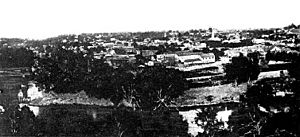
Rome had important iron factories that made cannons and other weapons for the Confederate army during the Civil War. In April 1863, Confederate General Nathan Bedford Forrest defended the city. He tricked Union Colonel Abel Streight into surrendering near Rome.
Knowing they were vulnerable, Rome's city leaders built three forts. These forts were named after soldiers who had died: Fort Attaway, Fort Norton, and Fort Stovall.

In May 1864, Union General Jefferson C. Davis, under General William Tecumseh Sherman, captured Rome. The Confederate soldiers had to retreat. Union forces stayed in Rome for several months. On November 11, 1864, Union soldiers destroyed Rome's forts, iron factories, and the railroad line. They wanted to make sure these resources could not help the South's war effort.
After the War: Reconstruction and Growth
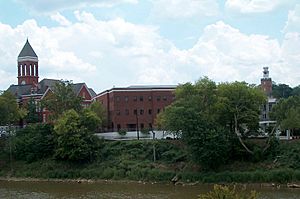
In 1871, Rome built a water tank on Neely Hill. This hill overlooks the downtown area. Later, it was turned into a clock tower. This clock tower became a famous landmark for the city.
After the Civil War, during a time called Reconstruction, Georgia started public schools for the first time in 1868. Rome opened its first public schools. However, schools were separated by race and often had short school years because there wasn't much money.
Because Rome is on a river, it has sometimes had bad floods. In 1886, a flood was so deep that a steamboat could travel down Broad Street! To protect the town, levees (walls to hold back water) were built along the rivers. In the late 1890s, Broad Street was even raised about 15 feet higher. This meant that the original ground floors of many historic buildings became basements.
The Twentieth Century in Rome
In 1928, a rayon factory was built in Rome. It was a joint project between an American and an Italian company. The Italian leader, Benito Mussolini, sent a piece of marble from the ancient Roman Forum for the factory's cornerstone. It was carved with "From Old Rome to New Rome."
After the factory was finished in 1929, Mussolini sent a bronze copy of the statue of Romulus and Remus with the Capitoline Wolf. This statue was placed in front of City Hall. It had a plaque that said it was a "forecast of prosperity and glory."
During World War II, people felt strongly against Italy. In 1940, the city moved the statue into storage to protect it from damage. They put an American flag in its place. In 1952, the city put the statue back in front of City Hall.
The Great Depression's Impact
The Great Depression in the 1930s was not as bad in Rome as in bigger cities. Since Rome was an agricultural town, people could still grow food. Rome's textile mills also kept working, giving people jobs.
Before the Great Depression, in the mid-1920s, there was a "Cotton Bust" in the South. This was because of the boll weevil, a tiny insect that destroyed many cotton fields. Many farmers left the area or started growing other crops like corn. Many African Americans moved away to find work in cities in the North.
Even though times were tough, people helped each other. Wealthier residents bought tickets to shows to raise money for the poor. The money was used to buy food for families in need.
A local businessman, S.H. Smith Sr., started a project to build the Greystone Hotel. This gave many people jobs during the hard times.
Rome's Location and Landscape
Rome is located in the foothills of the Appalachian Mountains. It sits where the Etowah and Oostanaula rivers meet to form the Coosa River. This river connection was very important for transportation and trade in the past. Because of this, Rome became a major trading center, especially for cotton.
The city covers about 31.68 square miles of land. About 0.77 square miles is covered by water.
The seven hills that gave Rome its name are: Blossom, Jackson, Lumpkin, Mount Aventine, Myrtle, Old Shorter, and Neely Hills. Neely Hill is also known as Tower or Clock Tower Hill. Some of these hills have changed a bit since Rome was founded.
Rome's Weather
Rome has a humid subtropical climate. This means it has relatively high temperatures and rain throughout the year.
| Climate data for Rome, Georgia (1991–2020 normals, extremes 1893–present) | |||||||||||||
|---|---|---|---|---|---|---|---|---|---|---|---|---|---|
| Month | Jan | Feb | Mar | Apr | May | Jun | Jul | Aug | Sep | Oct | Nov | Dec | Year |
| Record high °F (°C) | 80 (27) |
85 (29) |
92 (33) |
95 (35) |
103 (39) |
107 (42) |
109 (43) |
105 (41) |
107 (42) |
99 (37) |
87 (31) |
80 (27) |
109 (43) |
| Mean daily maximum °F (°C) | 52.0 (11.1) |
56.1 (13.4) |
64.8 (18.2) |
73.7 (23.2) |
80.6 (27.0) |
86.5 (30.3) |
89.7 (32.1) |
88.9 (31.6) |
83.8 (28.8) |
73.8 (23.2) |
63.0 (17.2) |
54.3 (12.4) |
72.3 (22.4) |
| Daily mean °F (°C) | 41.1 (5.1) |
44.4 (6.9) |
51.9 (11.1) |
60.0 (15.6) |
68.0 (20.0) |
75.3 (24.1) |
78.8 (26.0) |
77.9 (25.5) |
72.2 (22.3) |
61.1 (16.2) |
50.3 (10.2) |
43.7 (6.5) |
60.4 (15.8) |
| Mean daily minimum °F (°C) | 30.2 (−1.0) |
32.8 (0.4) |
39.0 (3.9) |
46.4 (8.0) |
55.3 (12.9) |
64.1 (17.8) |
67.9 (19.9) |
67.0 (19.4) |
60.5 (15.8) |
48.4 (9.1) |
37.7 (3.2) |
33.1 (0.6) |
48.5 (9.2) |
| Record low °F (°C) | −9 (−23) |
−5 (−21) |
8 (−13) |
23 (−5) |
33 (1) |
42 (6) |
51 (11) |
51 (11) |
32 (0) |
23 (−5) |
4 (−16) |
−2 (−19) |
−9 (−23) |
| Average precipitation inches (mm) | 4.98 (126) |
4.81 (122) |
5.42 (138) |
4.88 (124) |
4.11 (104) |
4.79 (122) |
4.89 (124) |
4.20 (107) |
3.66 (93) |
3.78 (96) |
4.27 (108) |
5.30 (135) |
55.09 (1,399) |
| Average snowfall inches (cm) | 0.1 (0.25) |
0.0 (0.0) |
0.0 (0.0) |
0.0 (0.0) |
0.0 (0.0) |
0.0 (0.0) |
0.0 (0.0) |
0.0 (0.0) |
0.0 (0.0) |
0.0 (0.0) |
0.0 (0.0) |
0.3 (0.76) |
0.4 (1.0) |
| Average precipitation days (≥ 0.01 in) | 10.3 | 10.9 | 10.4 | 9.2 | 9.0 | 10.5 | 10.2 | 8.9 | 7.2 | 7.2 | 8.4 | 10.7 | 112.9 |
| Average snowy days (≥ 0.1 in) | 0.1 | 0.0 | 0.0 | 0.0 | 0.0 | 0.0 | 0.0 | 0.0 | 0.0 | 0.0 | 0.0 | 0.0 | 0.1 |
| Source: NOAA | |||||||||||||
People and Population in Rome
| Historical population | |||
|---|---|---|---|
| Census | Pop. | %± | |
| 1860 | 4,010 | — | |
| 1870 | 2,748 | −31.5% | |
| 1880 | 3,877 | 41.1% | |
| 1890 | 6,957 | 79.4% | |
| 1900 | 7,291 | 4.8% | |
| 1910 | 12,099 | 65.9% | |
| 1920 | 13,252 | 9.5% | |
| 1930 | 21,843 | 64.8% | |
| 1940 | 26,282 | 20.3% | |
| 1950 | 29,615 | 12.7% | |
| 1960 | 32,336 | 9.2% | |
| 1970 | 30,759 | −4.9% | |
| 1980 | 29,654 | −3.6% | |
| 1990 | 30,326 | 2.3% | |
| 2000 | 34,980 | 15.3% | |
| 2010 | 36,303 | 3.8% | |
| 2020 | 37,713 | 3.9% | |
| U.S. Decennial Census 1850-1870 1870-1880 1890-1910 1920-1930 1940 1950 1960 1970 1980 1990 2000 2010 2020 |
|||
Rome's Population in 2020
| Race / ethnicity (NH = Non-Hispanic) | Pop. 2000 | Pop. 2010 | Pop. 2020 | % 2000 | % 2010 | 2020 |
|---|---|---|---|---|---|---|
| White alone (NH) | 20,704 | 18,974 | 17,971 | 59.19% | 52.27% | 47.65% |
| Black or African American alone (NH) | 9,638 | 9,991 | 10,020 | 27.55% | 27.52% | 26.57% |
| Native American or Alaska Native alone (NH) | 78 | 88 | 77 | 0.22% | 0.24% | 0.20% |
| Asian alone (NH) | 494 | 690 | 742 | 1.41% | 1.90% | 1.97% |
| Pacific Islander alone (NH) | 25 | 17 | 10 | 0.07% | 0.05% | 0.03% |
| Some other race alone (NH) | 43 | 73 | 134 | 0.12% | 0.20% | 0.36% |
| Mixed race or multi-racial (NH) | 378 | 578 | 1,340 | 1.08% | 1.59% | 3.55% |
| Hispanic or Latino (any race) | 3,620 | 5,892 | 7,419 | 10.35% | 16.23% | 19.67% |
| Total | 34,980 | 36,303 | 37,713 | 100.00% | 100.00% | 100.00% |
In 2020, there were 37,713 people living in Rome. There were 14,169 households and 8,870 families.
Rome's Economy and Jobs
Rome has a strong and varied economy. It includes manufacturing, education, healthcare, technology, and tourism. In 1954, General Electric built a factory in Rome to make electrical parts. In the 1960s, the Rome Plow Company made large armored vehicles. These were used by the U.S. military to clear jungles during the Vietnam War. Later in the 1900s, many carpet mills also grew around Rome.
Rome is also known for its medical facilities. These include Floyd Medical Center, Redmond Regional Medical Center, and Harbin Clinic. These hospitals work with the Northwest Georgia Clinical Campus of the Medical College of Georgia. This helps train new doctors.
Many national companies are part of Rome's technology industry. Some of these are Brugg Cable and Telecom, Suzuki Manufacturing of America, and Pirelli Tire. Other big companies in Rome include State Mutual Insurance Company.
In March 2020, Kerry Group announced plans to build a large food-making factory in Rome. It will cost $125 million.
Arts, Culture, and Fun in Rome
There are many interesting places to visit in Rome:
- Martha Berry Museum: This museum honors Martha Berry, who started Berry College.
- Rome Area History Museum: Learn about the history of Rome here.
- Chieftains Museum (Major Ridge Home): This museum teaches about Cherokee history and Chief Major Ridge.
- Clock Tower: You can visit this famous clock tower, which also has a museum.
- Rome Symphony Orchestra: This is the oldest symphony orchestra in the Southern United States.
Many places in Rome are listed on the National Register of Historic Places listings in Floyd County, Georgia. This means they are important historical sites. Some examples include:
- Berry Schools
- Chieftains
- Etowah Indian Mounds
- Floyd County Courthouse
- Myrtle Hill Cemetery
- Rome Clock Tower
Sports in Rome
Since 2003, Rome has been home to the Rome Emperors. This is a High-A baseball team linked to the Atlanta Braves. They play in the South Atlantic League. Sports tourism is a big part of Rome's economy. In 2010, sports events brought over $10 million to the local economy. Tennis tournaments alone brought in over $6 million that year.
Rome also hosted the NAIA Football National Championship from 2008 to 2013.
The city has also hosted parts of the Tour de Georgia bike race several times.
Education in Rome
Public Schools
The Rome City School District serves the entire city. It has seven elementary schools, one middle school (Rome Middle School), and one high school (Rome High School). The district has over 5,395 students.
The Floyd County School District serves families living outside the city limits. Some of its high schools, like Armuchee High School and Coosa High School, have Rome postal addresses.
Private Schools
Rome has several private schools:
- Darlington School: This school was started in 1905. It offers classes from Pre-K to 12th grade.
- Unity Christian School: This Christian school opened in 1998 and teaches Pre-K to 12th grade.
- Berry College Elementary and Middle School: This school uses the resources of Berry College.
- Montessori School of Rome: This school follows the Montessori teaching method for all grades. It opened in 1980.
- Providence Preparatory Academy: This school offers kindergarten through 11th grade and plans to add 12th grade.
- St. Mary's Catholic School: Started in 1945, this school teaches Pre-K through eighth grade.
Colleges and Universities
Rome is home to four colleges:
| College | Public/ private |
Type | Notes |
|---|---|---|---|
| Berry College | Private | Liberal arts | Founded in 1902 by Martha Berry |
| Georgia Northwestern Technical College | Public | Technical college | Formerly "Coosa Valley Technical College," founded in 1962 |
| Georgia Highlands College | Public | State college | Formerly Floyd Junior College |
| Shorter University | Private | Liberal arts | Formerly Shorter College, founded in 1873 |
Rome in Movies and TV
Rome has been a filming location for many movies and TV shows.
Feature Films
| Year | Title | Notes |
|---|---|---|
| 1979 | The Double McGuffin | Filmed at Berry College and Darlington School. |
| 1986 | The Mosquito Coast | Scenes from Rome were used to represent a fictional city. |
| 1991 | Dutch | This comedy had scenes shot at Berry College and other places in Rome. |
| 2000 | Remember the Titans | Part of the film was shot on the Berry College campus. |
| 2002 | Sweet Home Alabama | Filmed partly at Berry College and the Coosa Country Club. |
| 2008 | Dance of the Dead | An independent zombie comedy filmed at various Rome locations, including Myrtle Hill Cemetery and Shorter College. |
| 2013 | Identity Thief | Some street scenes were filmed in Rome. |
| 2014 | Need for Speed | Scenes were shot at Myrtle Hill Cemetery and in rural Floyd County. |
| 2021 | Black Widow | Scenes were filmed in 2019 at South Broad Street and Barron Stadium. |
| 2022 | Spirit Halloween: The Movie | Scenes were shot at the DeSoto Theater and a former Toys R Us store. |
Television Shows
| Year | Title | Episode(s) | Notes |
|---|---|---|---|
| 1991 | Perfect Harmony | N/A | A TV movie with scenes shot at Berry College. |
| 2000 | Ford commercial | ||
| 2012 | Finding Your Roots | 1.07: "Samuel L. Jackson, Condoleezza Rice, and Ruth Simmons" | Footage of Rome's downtown was used in the opening scenes. |
| 2013 | Beyond Scared Straight | 3.13: "Floyd County Jail, GA" | |
| 2022–2025 | Stranger Things | Several episodes of Season 4 and 5 were shot at the Claremont House. |
Local News and Radio
- Rome News-Tribune: Rome's local newspaper.
Rome also has several radio stations:
| Call letters | Frequency | Nickname | Format |
|---|---|---|---|
| WGPB | 97.7 FM | NPR | Public Radio |
| WLAQ | 1410 AM | n/a | Talk |
| WQTU | 102.3 FM | Q102 | Hot AC |
| WRGA | 1470 AM | n/a | News/Talk |
| WSRM | 93.5 FM | South 93.5 | Country |
| WROM | 103.1 FM | Radio M | Top 40 |
| WUKV | 95.7 FM | K-Love | Contemporary Christian |
| WRBF | 104.9 FM | 104.9 The Rebel | "Classic Rock, Southern style" |
| WGJK | 99.5 FM | K Country | Country |
Getting Around Rome
Roads and Highways
Rome is connected by several important roads:
 U.S. Route 27
U.S. Route 27 U.S. Route 411
U.S. Route 411 Georgia State Route 20
Georgia State Route 20 Georgia State Route 53
Georgia State Route 53 Georgia State Route 100
Georgia State Route 100 Georgia State Route 101
Georgia State Route 101 Georgia State Route 293
Georgia State Route 293 Georgia State Route 140
Georgia State Route 140
Walking and Biking Trails
Rome has many trails for walking and cycling:
- Downtown River Trail
- Heritage Trail System
- Kingfisher Trail
- Oostanaula Levee Trail
- Silver Creek Trail
- Thornwood Trail
Hospitals in Rome
The main hospitals in Rome are Atrium Health Floyd and AdventHealth Redmond.
Famous People from Rome
Many well-known people have connections to Rome:
- Arn Anderson (born 1958), a professional wrestler
- Jamie Barton (born 1981), an opera singer
- Charlie Culberson (born 1989), a Major League Baseball player
- Kris Durham (born 1988), an American football player
- Mike Glenn (born 1955), an NBA basketball player
- Marjorie Taylor Greene (born 1974), a politician
- John H. Lumpkin (1812–1860), one of Rome's founders
- George Stephen Morrison (1919–2008), an admiral and father of singer Jim Morrison
- Will Muschamp (born 1971), a college football coach
- John Pemberton (1831–1888), the inventor of Coca-Cola
- Ma Rainey (1886–1939), a famous blues singer
- Dan Reeves (1944–2022), an American football player and coach
- Major Ridge (c. 1771 – 1839), a Cherokee chief
- John Ross (1790–1866), a principal chief of the Cherokee Nation
- Butch Walker (born 1969), a rock and roll musician
- Ellen L. A. Wilson (1860–1914), the First Lady of the United States and wife of President Woodrow Wilson
Images for kids
See also
 In Spanish: Rome (Georgia) para niños
In Spanish: Rome (Georgia) para niños




